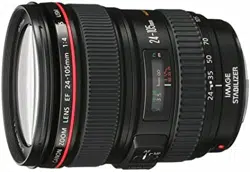Loading ...
Loading ...
Loading ...

How to Shoot
in Low Light
F
ixed focal length lenses often have much larger apertures than zooms and this is a huge advantage
when shooting in low light conditions. By opening up a lens’ aperture to f/1.4, you let through four
times as much light as a zoom lens used at f/2.8. This is enough to take a shutter speed of 1/15sec
up to 1/60sec – fast enough to shoot hand-held without camera shake or subject movement spoiling the
sharpness of the image.
EF 28mm f/2.8 IS USM, 1/400 sec @ f/4, ISO 800 © Jeff Ascough. Canon Ambassador
EF 50mm f/1.8 II
3.2 sec @ f/9, ISO 400
© Ulla Lohmann. Canon Explorer
Life
Download the digital version of Explore
EOS to read our exclusive interview with
Canon Ambassador Brent Stirton.
See page 3 for download details.
EF 24mm f/1.4L II USM
A super wide-angle lens, with a huge aperture
to match. Popular with photojournalists
shooting close to their subject, this lens is
perfect for photographers who demand the
highest levels of performance.
EF 35mm f/1.4L USM
A classic reportage lens used by photojournalists.
On a full-frame camera this offers a broader field
of view than a traditional 50mm lens, whilst
maintaining a natural perspective.
EF 28mm f/2.8 IS USM
A smaller wide-angle prime lens that uses an
Image Stabilizer to deliver sharp images in low
light conditions.
Documentary photographers tend to shoot with
wide-aperture prime lenses for this reason. Fixed focal
length lenses allow them to shoot using the ambient
light available, resulting in atmospheric pictures that
capture the mood of the occasion. Try to get in close to
your subject and fill the frame for a dramatic result.
45
Loading ...
Loading ...
Loading ...
